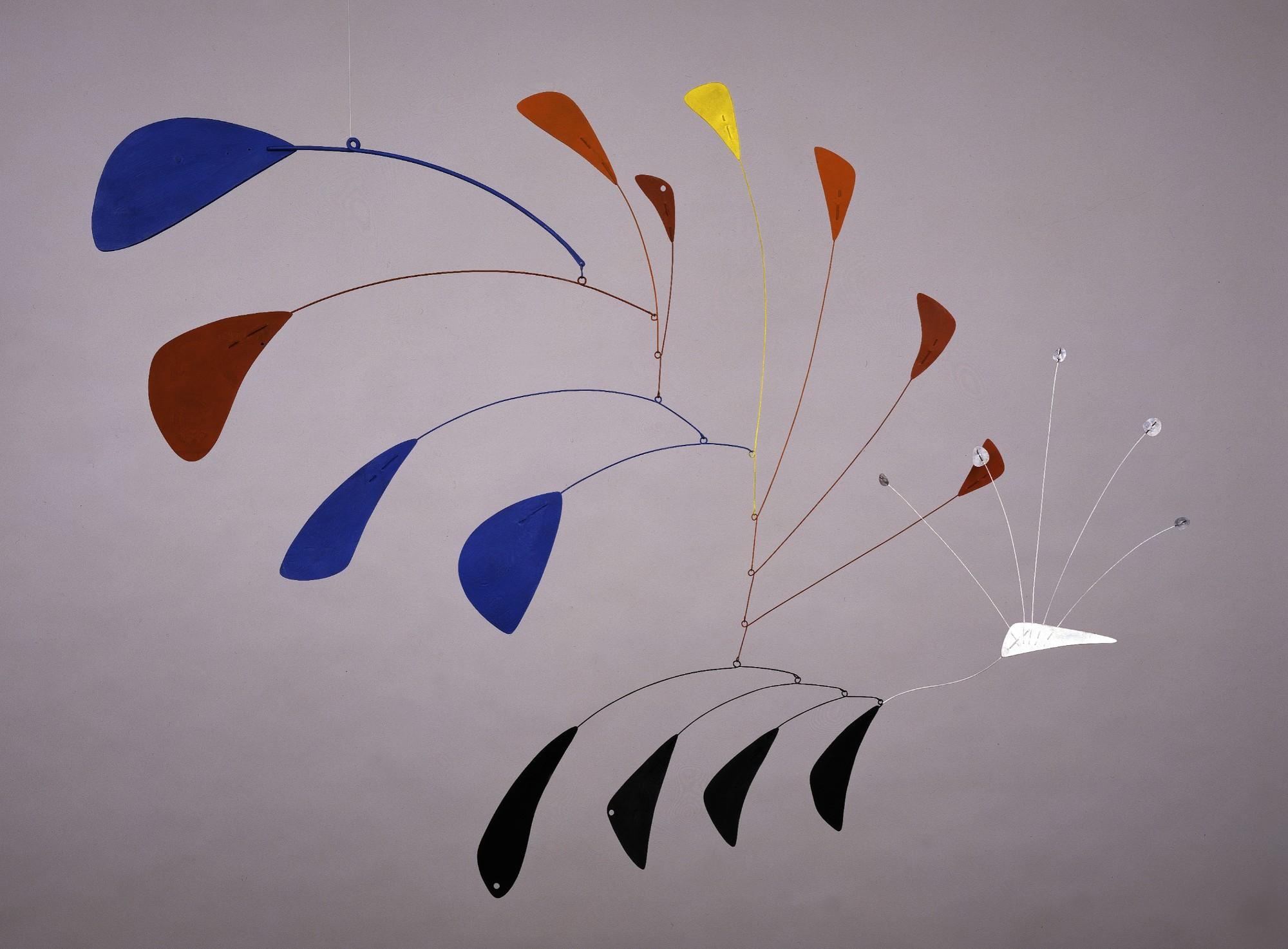
Alexander Calder (American, 18981976) Untitled (Standing Mobile, c
American Sculptor Born: July 22, 1898 - Lawnton, Pennsylvania Died: November 11, 1976 - New York, New York, USA Movements and Styles: Surrealism , Kinetic Art Alexander Calder Summary Accomplishments Important Art "The next step in sculpture is motion." 1 of 6 Summary of Alexander Calder

Museógrafo Los mejores eventos culturales cerca de ti Alexander
Bill Lamb Updated on January 18, 2019 Alexander Calder (July 22, 1898 - November 11, 1976) was one of the most prolific, recognizable, and beloved American artists of the 20th century. He was a pioneer of kinetic sculpture or mobiles: works with discreet moving parts.

Alexander calder, Mobile sculpture, sculpture
Alexander Calder ( / ˈkɔːldər /; July 22, 1898 - November 11, 1976) was an American sculptor known both for his innovative mobiles (kinetic sculptures powered by motors or air currents) that embrace chance in their aesthetic, his static "stabiles", and his monumental public sculptures. [1]

Alexander Calder mobile sculpture outside the modern art museum in
A mobile ( UK: / ˈmoʊbaɪl /, [1] US: / ˈmoʊbiːl /) [2] is a type of kinetic sculpture constructed to take advantage of the principle of equilibrium. It consists of a number of rods, from which weighted objects or further rods hang. The objects hanging from the rods balance each other, so that the rods remain more or less horizontal.

Alexander Calder Standing Mobile Sculpture, 1970s FormeModerne
Fast facts Commissioned in 1973, Untitled is Calder's largest major mobile, and his last. The artist passed away in November 1976, 12 months before the National Gallery East Building opened to the public. For this and other works, Calder took inspiration from natural forms: flower petals, fish fins, bird wings.

'Mobile', Alexander Calder Tate
Artist Alexander Calder 1898-1976 Medium Metal, wood, wire and string Dimensions Unconfirmed: 1500 × 2000 × 2000 mm Collection Lent from a private collection 1992 On long term loan Reference L01686 Display caption By suspending forms that move with the flow of air, Calder revolutionised sculpture. Marcel Duchamp dubbed these works ' mobiles '.

Trepied (1972) Alexander Calder Alexander calder, Alexander calder
But it wasn't until a decade later that the most iconic moving art appeared: Alexander Calder's mobiles. Their creation was largely the result of a 1930 visit by the burly Pennsylvania-born.

Alexander calder, Mobile art, Modern art
American artist Alexander Calder (1898-1976) is celebrated for revolutionizing sculpture with his renowned mobiles and stabiles, which range from the miniature to the monumental. This exhibition traces Calder's career, highlighting his most important themes, styles, and materials from the 1920s through the 1970s.
:max_bytes(150000):strip_icc()/alexander-calder-mobile-5b33c1c746e0fb00374c6e5a.jpg)
Life of Alexander Calder, Sculptor of Massive Mobiles
Buy Top Products On eBay. Money Back Guarantee!

Alexander Calder Mobile du Garage MutualArt
Alexander Calder, (born July 22, 1898, Lawnton, Pennsylvania, U.S.—died November 11, 1976, New York, New York), American artist best known for his innovation of the mobile suspended sheet metal and wire assemblies that are activated in space by air currents. Visually fascinating and emotionally engaging, those sculptures —along with his.

Pin by Jonathan Milton on Art Ideas Calder mobile, Alexander calder
Art and artists Store Tickets Alexander Calder American, 1898-1976 Works Exhibitions Publications " [One] cannot see, or even conceive of a thing from all possible points of view, simultaneously.. To finish the work [one] must approximate." Alexander Calder

Alexander Calder Mobile Sculptures Alexander Calder; Standing Mobile
Alexander Calder mobiles take a magnificent place in the history of Modern Art. What we now see hanging above the beds of toddlers, entrancing young children everywhere, started as an avant-garde art undertaking. Alexander Calder was raised by a sculptor father and painter mother.

Art in Motion Alexander Calder's Sculptures Calder mobile
"Alexander Calder, son and grandson of American academic sculptors, creator of joy in a circus of wire and wood, inventor of the mobile and stabile, bender of forms for multimedia exhibitions.

The Calder Mobiles that Asked to be Touched Art & Object
Article Wikipedia article References Alexander Calder redefined sculpture by introducing into it the element of movement. He created sculptures and design objects that participated in the larger tendencies of European and American avant-garde, uniquely combining abstract art, modernist principles, machine and cosmic imagery in his works.

Exhibition ‘Alexander Calder AvantGarde in Motion’ at the
Trained as a mechanical engineer, Alexander Calder revolutionized the world of kinetic sculpture with his suspended and standing mobiles (a name coined by Calder's friend and peer, Marcel Duchamp ). In 1932, bored by the monotony of mechanized movement, Calder introduced a new element of chance to his mobiles.

vjeranski Alexander Calder / indian feathers, 1969 Alexander calder
Sculpture Magnificent mobiles: the art of Alexander Calder Calder pioneered kinetic sculpture with his wafer thin mobiles that can be moved by a child's breath. Ahead of a Tate.